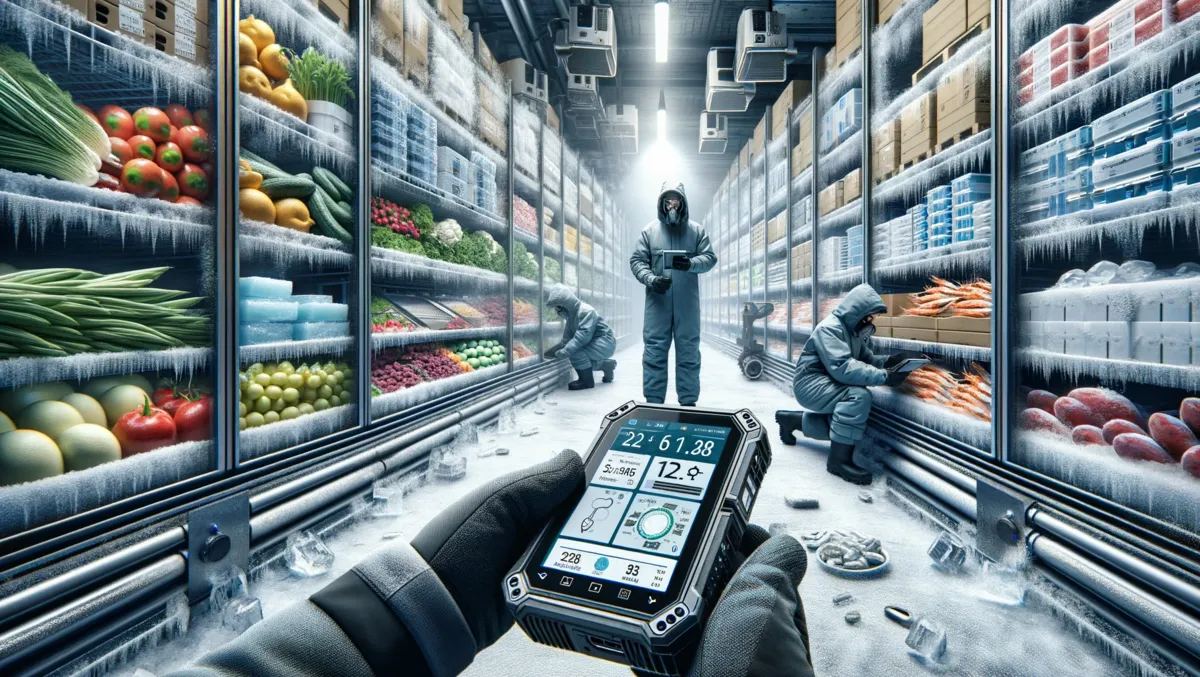
Why rugged devices are the stone-cold solution for cold chain management
Cold chain management relies on maintaining specific temperatures and potentially monitoring other environmental factors, like carbon dioxide, humidity, and oxygen levels, to preserve the quality and safety of products throughout their lifecycle. From manufacturing and production to packaging, transportation, storage, and distribution, a steadfast and uninterrupted supply of temperature-controlled environments is required.
However, different products have different storage requirements, meaning temperatures across various ranges. For example, seafood or desserts require colder temperatures than fruits and vegetables, while vaccines, which are highly sensitive to temperature variations, again need different temperature ranges.
And the consequences of a single mistake or change in temperature could be devastating. A shipment that strays from the specified temperature could compromise not only the integrity of the refrigerated vehicles but also the products themselves, leading to entire shipments being discarded to avoid further risks.
Prioritising preservation
The journey to ensure quality and safety is fraught with complexity, demand, and expense. Standards for pharmaceuticals, chemicals, and perishable foods are increasingly stringent, and any failure in temperature-sensitive goods can spell disaster. This makes cold chain compliance crucial.
However, businesses that operate in the cold chain management space are increasingly turning to robust solutions explicitly tailored to these harsh conditions to help safeguard the quality of vital products.
There are multiple reasons for this, including:
- Regulatory compliance and traceability: to protect the integrity of products in the cold chain, businesses need to comply with strict regulations. These regulations often mandate continuous cold chain custody documentation, especially for temperature-sensitive products, such as pharmaceuticals. Beyond mere compliance, regulators and consumers demand detailed insight into the provenance and handling of food and medical supplies. This intense focus on traceability ensures both safety and ethical sourcing. Rugged mobile devices help to bridge this gap, providing accurate, real-time information to facilitate compliance. This is substantiated by documentation that is tracked digitally.
- Real-time visibility: today's market necessitates real-time monitoring of temperature-sensitive cargo, especially as even brief temperature deviations can cause spoilage. Supply chain delays can create significant risks for perishable items, leading to expired fruits, vegetables, vaccines, and other products. However, mobile devices that alert workers can make a difference in maintaining quality. Rugged devices let businesses take that protection one step further by ensuring the devices themselves remain operational, even in harsh temperatures.
The robust role of rugged devices in cold chain management
From refrigeration equipment to containers, packaging, and vehicles, technological advancements continue to enhance safety and quality across cold chain management. Robust devices enhance this management by placing connectivity within arm's reach without compromising efficiency in cold environments. Devices built to withstand harsh environments and work within required temperature ranges can outperform other mobile devices. Those that don't meet these standards may become ineffective or dysfunctional, risking the stability and lifespan of the cold storage equipment.
Robust devices must adhere to certain standards to function within the temperature confines of cold storage facilities. Among these are military standard (MIL-STD) certifications for ruggedness and ingress protection (IP) ratings to define dust, water, and intrusion protection levels.
Businesses should look for robust tablets, along with docking stations and other hardware, that are purpose-built to function in harsh conditions, making them ideal for cold chain management. For example, tablets that are built to the military-grade MIL-STD-810H standard provide a potent blend of versatility and computing power. When coupled with peripherals like printers, keyboards, and barcode scanners, rugged devices become an integral part of a mobile workforce strategy. By incorporating Internet of Things (IoT) connectivity for monitoring temperature-sensitive products, organisations can achieve rapid responses that let them maintain the required environment.
The future of cold chain management is one where technology meets tenacity, ensuring the quality and safety of products that touch lives every day, and robust tablets have the potential to redefine the cold chain. Rugged devices enhance productivity and efficiency, keeping pace with the demands of cold chain operations and shipping logistics.

